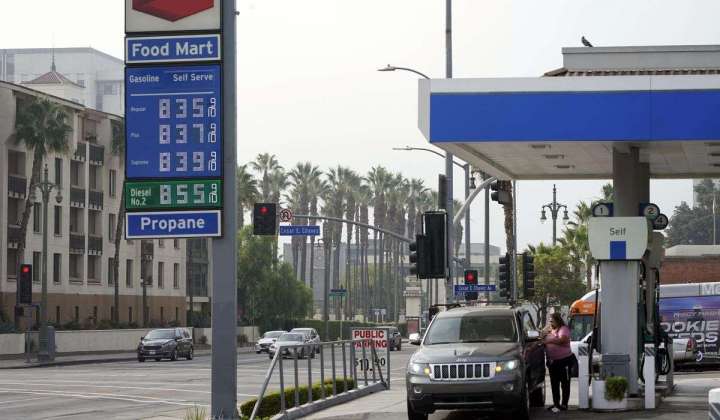Don’t expect dip in gas prices to last long in 2023, say energy analysts

The average price for a gallon of regular gasoline was $3.13 as of Wednesday, down 42 cents from one month ago, after peaking at a record $5.02 earlier this year, according to AAA.
But energy analysts say drivers should enjoy the break at the pump while they can because prices in the new year are set to increase, thanks to a volatile market where global demand continues to outpace supply.
In an annual forecast released Wednesday, the fuel-price tracking service GasBuddy predicted the average will bottom out at around $3 per gallon in February and peak in June at around $4 before ending the year slightly lower with an annual average of $3.49.
The Energy Information Administration (EIA) has a similar prediction of $3.57 for 2023, which would make it the second-highest yearly average since 2013.
Those numbers are down from 2022’s average of just under $4 but far higher than 2021’s roughly $3.
Russia’s war against Ukraine, China lifting its COVID-19 restrictions and the U.S. economy teetering on the edge of a recession all make the perfect recipe for a volatile global market with elevated prices.
“What we saw in 2022 was simply madness at the nation’s fuel pumps, with records being set seemingly left and right as COVID imbalances persisted and Russia invaded Ukraine,” said Patrick De Haan, GasBuddy founder and head of petroleum analysis. “While it’s highly improbable that lightning strikes the same spot twice, the storm clouds over oil and refined markets may persist, and there still could be some spikes as the market remains somewhat tight.”
In congressional testimony and other public remarks, oil company executives have said the Biden administration’s energy policies have a chilling effect on new production, albeit small.
And thanks to the shift to clean energy and new oil projects facing “uphill political battles and questions of profitability,” Mr. De Haan said there’s “little industry interest in building additional refining capacity or expanding.”
However, energy experts say politics still has little to do with gasoline prices because politicians exaggerate the amount of influence elected officials have when it comes to raising and lowering costs.
Despite President Biden’s rhetoric against Big Oil, the EIA forecasts U.S. crude oil production will be at an all-time high in 2023 with an average 12.4 million barrels of oil per day, up from the 11.7 million in 2022 and surpassing the previous record high set in 2019.
“Americans love to hold onto the myth that politicians are all-powerful and all-knowing, but when it comes to gasoline prices, global influences on supply and demand are really the gremlin that determines prices,” Mr. De Haan said. “Politicians who only care about your vote would love you to think they can control everything, but really can’t do much over global fundamentals driving prices down or up.”
Oil market prices are one of the leading factors for what Americans pay to fill up their tanks. Prices have hovered at just under $80 per barrel over the past month as gasoline prices plummeted by nearly 50 cents, down significantly from peaks in March and June of about $120 or more per barrel.
Barring a major economic downturn next year, longtime energy market analyst Dan Dicker said Americans can expect oil prices to return to triple-digit territory, which would be in line with pump prices ticking upward to $3.50 per gallon or more.
“Unless the world economy tips off a cliff in 2023 … oil will go back to triple digits. There’s a huge systemic supply shortage,” Mr. Dicker said. “If China gets their COVID act together, the world doesn’t tip into recession and demand doesn’t get pummeled, there’s a shortage that’s been endemic in the market for the past year and a half.”






